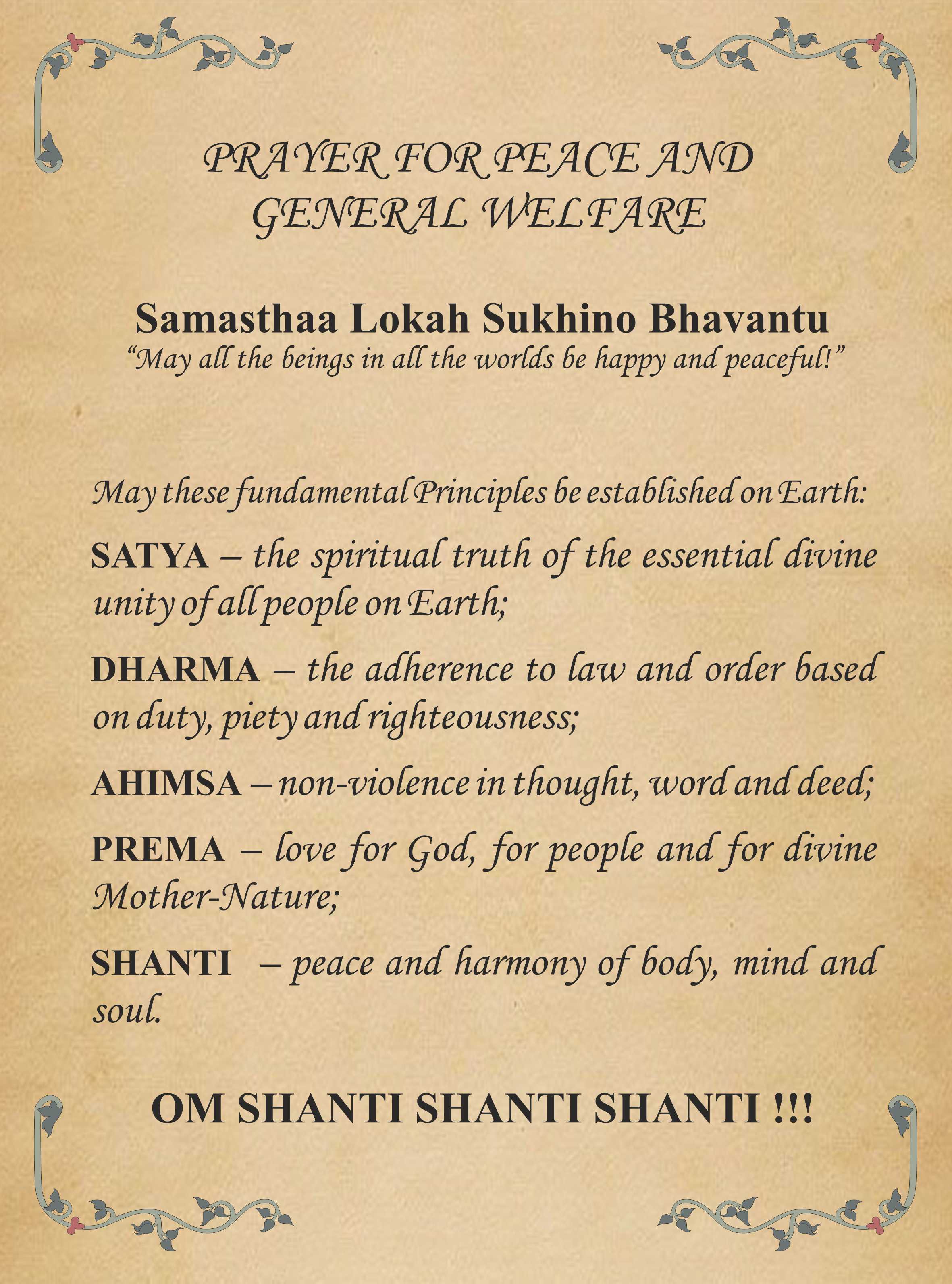Prayer
Outline
This section addresses the most ancient type of spiritual practice, which is prayer, the most powerful and innate manner of spiritual expression. The Vedic prayer, Loka Samastha Sukhino Bhavantu (“May all the people in the world be happy”) *, introduces this section in particular and the website in general. It serves beautifully to express the essence of our Yoga School: that it is spirit-oriented and directed towards the fundamental norms of human coexistence. In Vedic culture, in the bosom of which yoga was born, prayer acts primarily as a purifying and inspiring force. Through prayer, in the pursuit to comprehend Universality of Being, a devotee, a yogi, rises above worldly, selfish concerns and thus receives the blessing of God's Grace. The main driving force in his life becomes love and compassion directed equally towards all living things.
“Moral rectitude must distinguish all the nations of the world before we can expect
the dawn of permanent world peace.”
Swami Narayanananda (“A Practical Guide to Samadhi”)
“May all the people in the world be happy!” This prayerful appeal uttered from the heart is of great spiritual value itself. But in what way, under what conditions can the happiness of all beings of this world be achieved? Is it at all possible for this to actually happen? Even if it is not, we should not abandon the very idea of striving together to unite and create “a paradise on earth” — to build a WORLD based on the principles of peacefulness, good neighborliness, mutual respect and humanity. These principles — Satya, Dharma, Ahimsa, Prema and Shanti — provided by the Divine Teacher of our time, Bhagavan Sri Sathya Sai Baba — should become the philosophy of life for every spiritual traveler who treads the path of Yoga.
However, no matter how appealing these goals may seem for an aspirant and for society, they cannot come to life themselves. Each person must assume part of the responsibility for their implementation. If we really want to make a difference, to see our own country, Russia, successful and thriving, we need to put things in order “in our own house” — in our heads and hearts. While appealing for truth (satya), we ourselves must establish it within ourselves. While appealing for the righteous life, a sense of duty and conscience (dharma), we ourselves have to tirelessly exercise them. Appealing for non-violence (ahimsa), we must be an embodiment of non-violence. Appealing for love (prema), we ourselves have to become a source of profound love. Appealing for peace (shanti), we must become its distributor and protector.
By referring to this Vedic prayer, Shanthi, Shanthi, Shanthi, here in this website in the light of our interpretation, and adorning it with Swami Jyotirmayananda’s essential comment, we voice a hope that it might become a part of the daily practice of prayer for many of you, the friends of our website, and it might motivate you for further, even more profound prayerful efforts.
Artistically designed “Quotes on Prayer” and the following materials on the innermost essence of prayer, and the features and principles of the practice of prayer are included as an additional feature of this Section.
* NOTE
On the 31st of August 2008, Bhagavan Sri Sathya Sai Baba made a change to this prayer (or mantra) indicating that it was time to broaden its meaning by rearranging the first two words: Samastha Lokah instead of Lokah Samastha. If the traditional prayer/mantra meant "May all human beings in the world be happy", with this revising the prayer/mantra became "Let all the worlds be happy" (and thereby all the beings in the worlds)." The traditional version was addressed only to the earthly world (bhu). The revised prayer/mantra is now addressed to all worlds and all their inhabitants.
Om Tat Sat!
Author of the Project

...